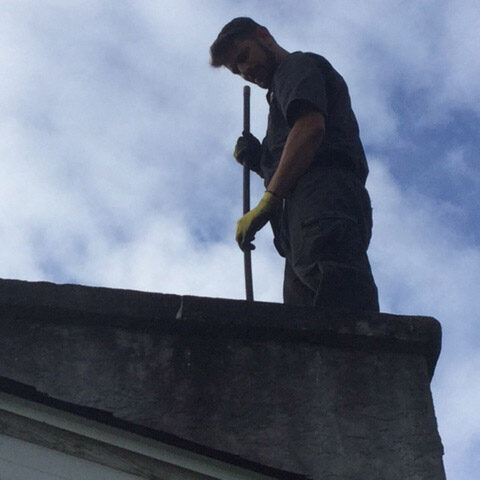DIY Chimney Maintenance San Jose: Step-by-Step Overview for Homeowners
DIY Chimney Maintenance San Jose: Step-by-Step Overview for Homeowners
Blog Article
Specialist Tips for Effective Smokeshaft Maintenance You Need to Know
Smokeshafts serve as critical elements in several homes, supplying warmth and comfort. From the importance of routine assessments to risk-free functional methods, a thorough method to chimney upkeep is necessary.
Importance of Regular Examinations
Regular inspections of chimneys are crucial for ensuring their security and functionality. Smokeshafts play an important role in venting out hazardous gases and maintaining appropriate air movement in a home. With time, creosote build-up, debris, and architectural damage can happen within the chimney, posturing major threats such as chimney fires or carbon monoxide gas leakages.
During a smokeshaft evaluation, trained professionals examine the condition of the chimney, seeking any type of signs of damage, obstructions, or damage. They additionally check the stability of the flue, smokeshaft lining, and chimney cap to make sure everything is in appropriate functioning order. By determining and addressing issues early, pricey repair services or possible hazards can be prevented.
Routine assessments not just assist in maintaining the security of the smokeshaft but also contribute to its total performance. A clean and well-maintained chimney operates better, guaranteeing proper air flow and lowering the threat of interior air contamination. Scheduling annual smokeshaft evaluations is a proactive measure that homeowners can take to safeguard their residential property and enjoyed ones.
Cleaning Techniques and Regularity
Maintaining the safety and performance of a smokeshaft involves not just regular examinations however likewise implementing appropriate cleansing methods and identifying the optimal regularity for cleansing. Smokeshafts ought to be cleansed by an expert smokeshaft sweep a minimum of yearly, also if they are not often made use of. If the chimney is used consistently, particularly with wood-burning cooktops or fire places, it might call for more frequent cleansings to stop the accumulation of creosote, an extremely combustible substance that can lead to chimney fires.
Property owners must never ever neglect chimney cleaning, as it is important for maintaining a risk-free and practical smokeshaft system. Regular cleansings not only lower the threat of chimney fires yet also improve the smokeshaft's general efficiency and long life.
Attending To Chimney Leaks

When dealing with chimney leakages, complete inspection and punctual repair services are important to stop water damage and maintain the architectural integrity of the smokeshaft. Leakages in a chimney can cause serious problems such as mold and mildew growth, degeneration of the chimney structure, and also prospective fire hazards. To successfully address chimney leakages, start by examining the smokeshaft cap, crown, flashing, and masonry for any kind of indications of damages or wear. Chimney caps must be securely in position to stop water from getting in, while the crown and blinking should be intact and correctly secured. Any kind of fractures or voids in the masonry should be fixed immediately to protect Find Out More against water infiltration. In addition, consider waterproofing the chimney to offer an added layer of protection against wetness. Regular Home Page maintenance and inspections can help deal with and find chimney leakages early, saving you from pricey repair services and guaranteeing the safety and durability of your chimney.
Comprehending Creosote Accumulation
To understand the potential hazards of creosote build-up in smokeshafts, it is vital to acknowledge its formation procedure and influence on chimney performance. When wood or fossil fuels are burned, Creosote is a black or brown tar-like substance that accumulates inside smokeshaft systems. As smoke climbs through the chimney, it condenses and cools down, leading to the development of creosote, which abides by the chimney walls.

Normal smokeshaft examinations and cleanings by a professional smokeshaft sweep are critical in protecting against creosote accumulation and making sure the secure operation of your chimney system.
Safe Procedure Practices
Executing Continued correct safety procedures is vital for the protected and efficient operation of chimney systems. Always guarantee that the chimney is properly inspected and cleaned up frequently to eliminate any kind of creosote build-up, which can lead to smokeshaft fires.
In addition, ensure to only shed experienced timber in your fire place, as eco-friendly or damp wood can generate more creosote and cause hazardous smokeshaft clogs. Never leave a fire unattended and always make sure the fire is entirely snuffed out prior to going to bed or leaving the residence. By adhering to these risk-free procedure practices, you can enjoy a relaxing and warm fire while making sure the safety and security of your home and enjoyed ones.
Conclusion
To conclude, maintaining your chimney is essential for guaranteeing its safety and security and efficiency. Regular examinations, correct cleaning techniques, attending to leakages, managing creosote accumulation, and complying with secure operation practices are vital elements of chimney upkeep. By remaining on top of these tasks, you can prevent possible dangers and prolong the life-span of your smokeshaft. It is necessary to focus on smokeshaft maintenance to keep your home cozy and safe throughout the cooler months.
Over time, creosote buildup, particles, and structural damages can occur within the chimney, posturing severe threats such as chimney fires or carbon monoxide leakages.
If the chimney is used routinely, particularly with wood-burning stoves or fireplaces, it might call for more frequent cleanings to stop the buildup of creosote, a highly combustible compound that can lead to smokeshaft fires. (Chimney Maintenance San Jose)
To understand the potential dangers of creosote build-up in smokeshafts, it is important to acknowledge its development procedure and impact on smokeshaft performance. As smoke climbs via the smokeshaft, it condenses and cools down, leading to the development of creosote, which sticks to the chimney wall surfaces.
Constantly make certain that the smokeshaft is skillfully evaluated and cleaned frequently to eliminate any creosote buildup, which can lead to chimney fires.
Report this page